Sustainability Unit
The Sustainability Unit explores a variety of topics. Students will research environmental issues, such as single-use trash and fishery sustainability methods, as well as consider renewable energy sources.
This unit is inspired by the work of students, educators, museum educators, and teaching artists in the Stories of the Land and Its People program.
Bottle Cap Seascape sculpture by 7th grade students in the Stories Program (2019)
Vocabulary:
Shape
Color
Size + Scale
Composition
Texture
Scientific Illustration
Sculpture
Contrast
Foreground / Middle-ground / Background
Curricular Connections:
Scientific Illustration / Anatomy
Marine Life (Fish / Seaweed)
Industry / Economy
Environment / Conservation
Quantitative / Qualitative Research
Descriptive Writing / Informative Writing
Sensory Writing / Poetry
Measurements
Alternative Energy (Solar, Hydro, and Wind)
Symbiosis
Farnsworth Collection:
Notice these works of art in the Farnsworth collection to begin your exploration of sculpture and 3-dimensional artwork.
Activity: Single-use Trash
Expedition: Collect clean single-use trash at home, at school, or during a “clean-up day” field trip.
Curricular Connections: Research the impacts of single-use trash on local eco-systems. Speak to local scientists in your area.
Create: Create a sculpture out of single-use objects to highlight the impact of this trash on our environment. Stories students collected used bottle caps to create a seascape sculpture to highlight the impacts of single-use plastic on our oceans.
Exhibit: Create advocacy posters to accompany your sculptures, write letters to your local/state representatives, and get involved in national/international organizations. Exhibit informative labels and literature alongside your sculpture.
Activity: Kelp farming
Inquiry: How can we support a sustainable fishery and encourage economic success for our community?
Expedition + Curricular Connections: Connect with local scientists and fishing professionals to learn more about your local marine industries and eco-systems. Consider how industries such as kelp farming may help support both the environment and the economy.
Students in the Stories program visit Herring Gut Learning Center to learn more about kelp farming.
Reflect + Connect: Following your expedition, review your research and ask further questions. What are you curious about?
Create: Using seaweed specimens and research as inspiration, create scientific illustrations of a variety of seaweeds. Consider shape, color, and texture as you draw. If you are able to study specimens, document how it feels and smells.
Create: Create your own “kelp line” with tissue paper and diluted watercolor paint.
Activity: trash fish
Create: Collect clean trash or single-use objects as your materials for your marine sculpture. Stories students collected trash from a beach clean-up day and collected objects from their home.
Connect: “Trash Fish” are fish that we could eat more of (but often throw out) to help create a more sustainable fishery. Create a sculpture of a “trash fish” out of trash. Study the anatomy of your fish and curate your trash by size, shape, and texture to best illustrate your specimen. Can you estimate how long it will take your sculpture to decompose?
Create: Students used the remaining trash to create an underwater display and as the foundation of their paper mache sculptures.
Students curate their trash as they explore a variety of layouts for their “trash fish” sculpture.
Gallery of Student Work:


























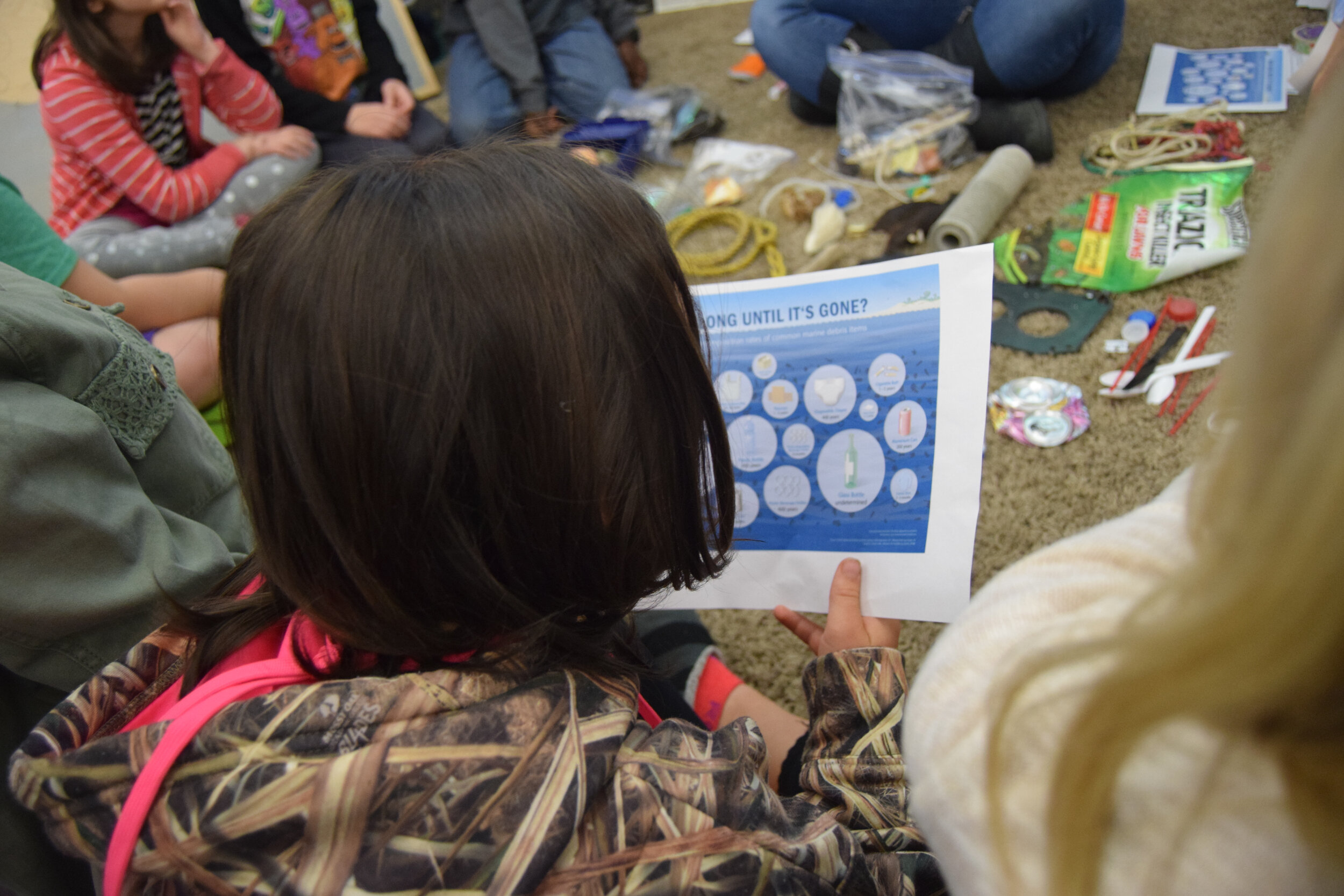
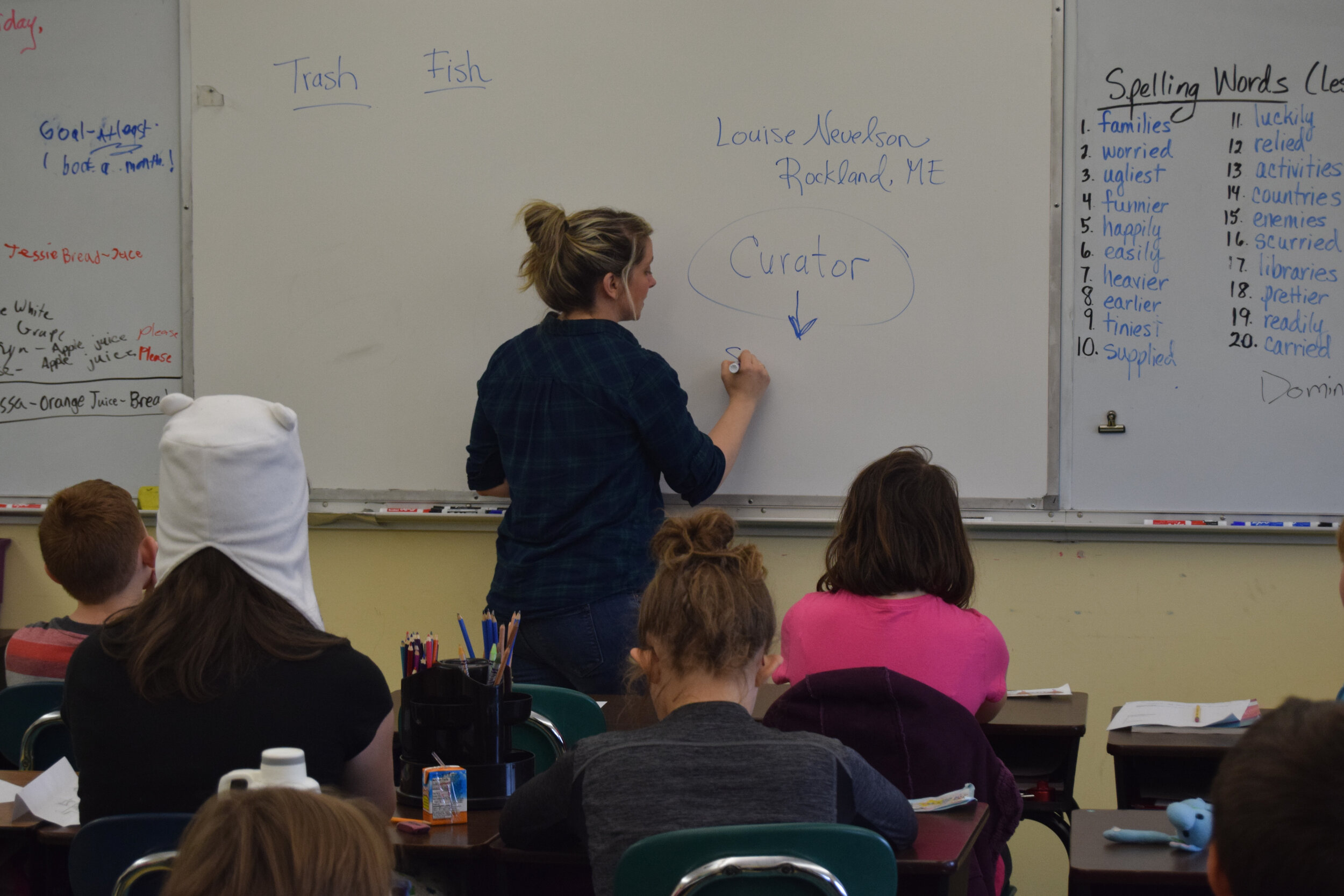
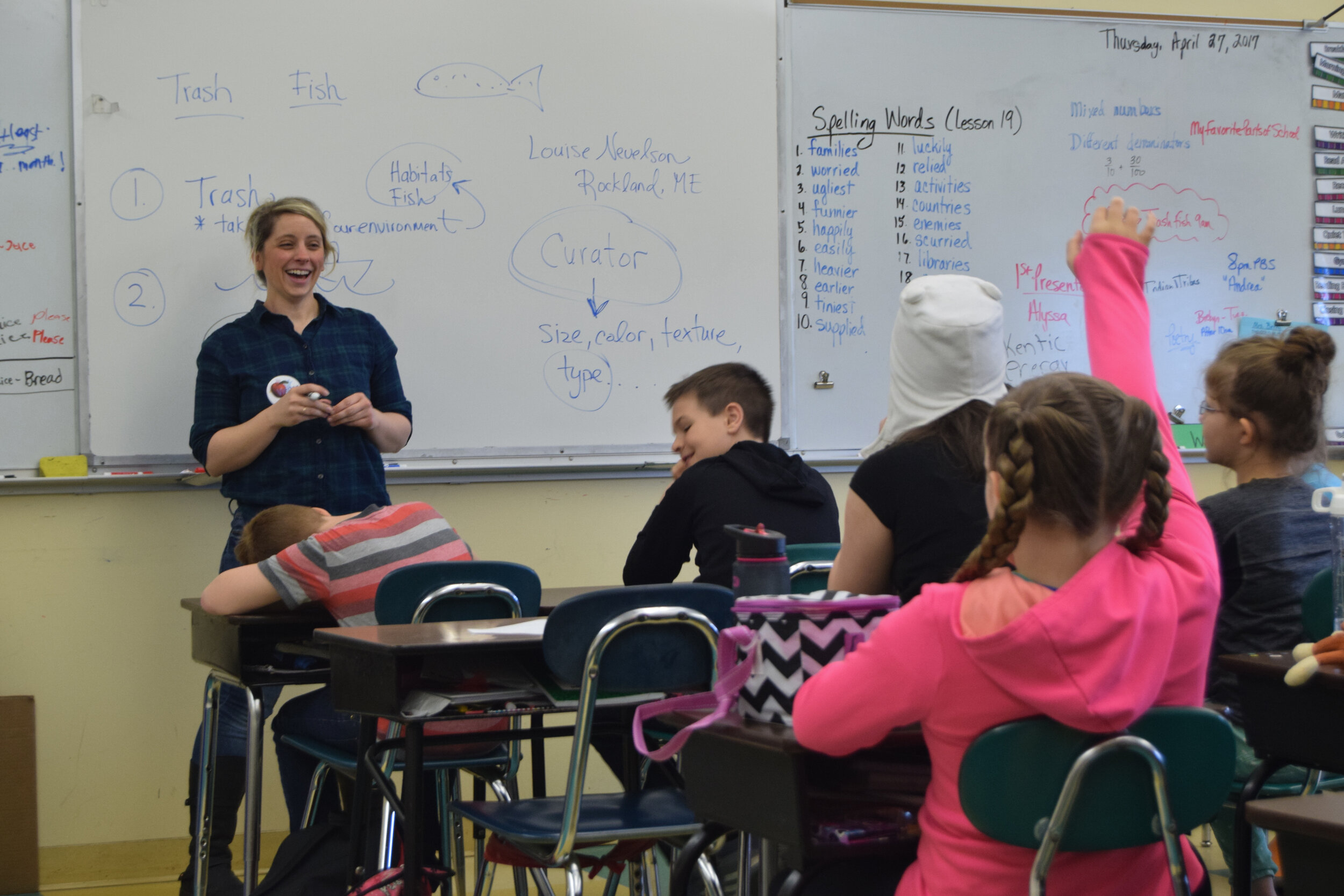
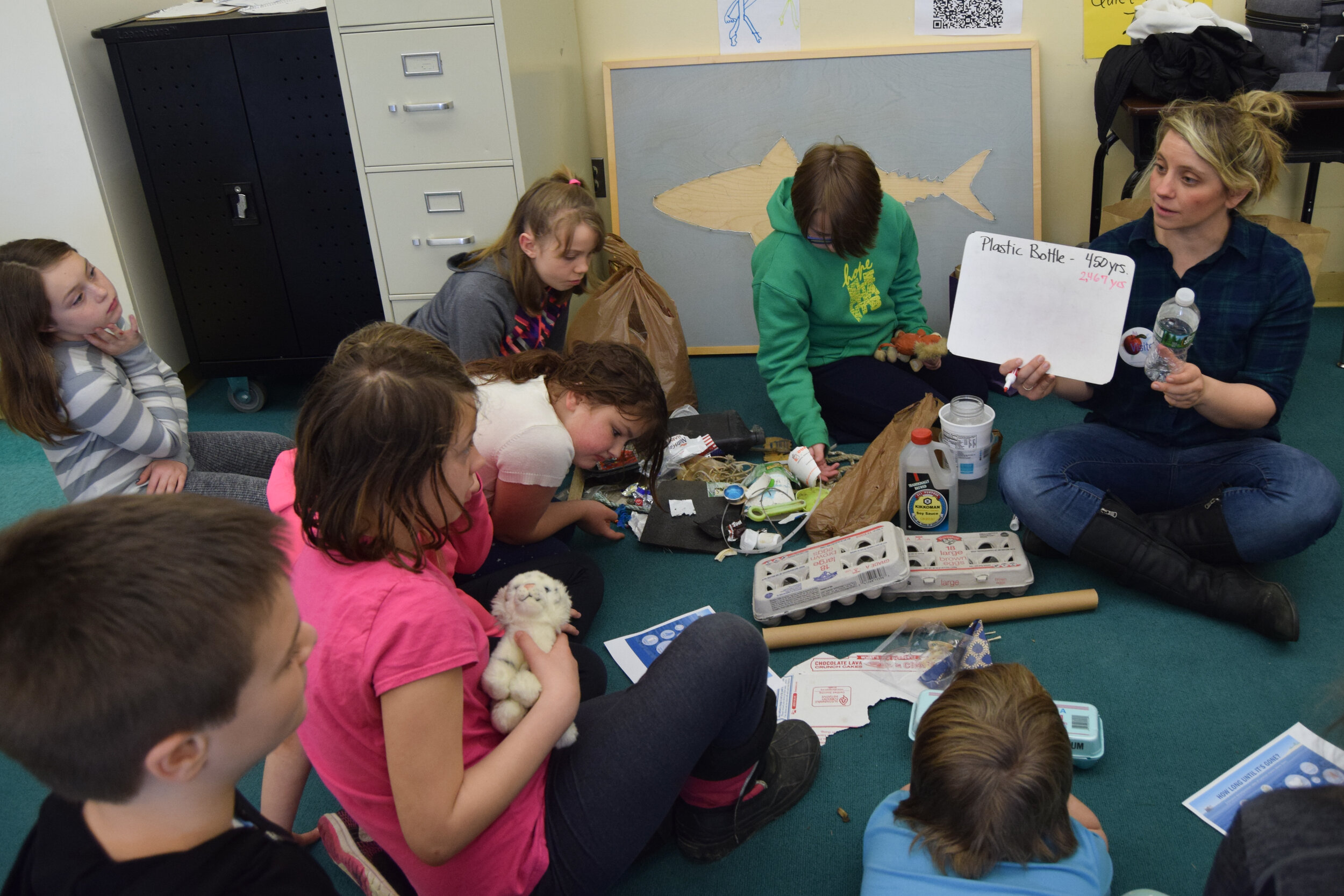

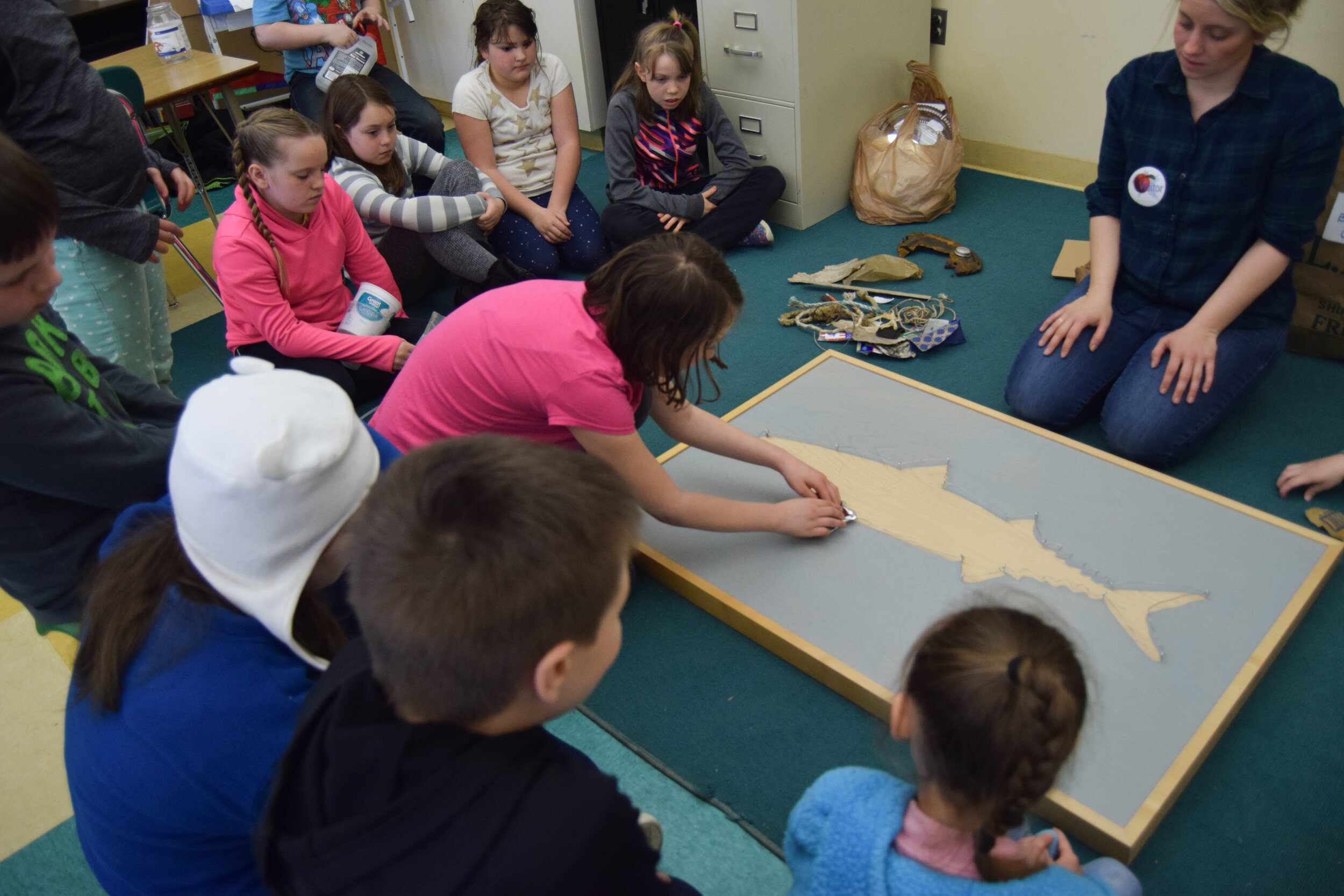
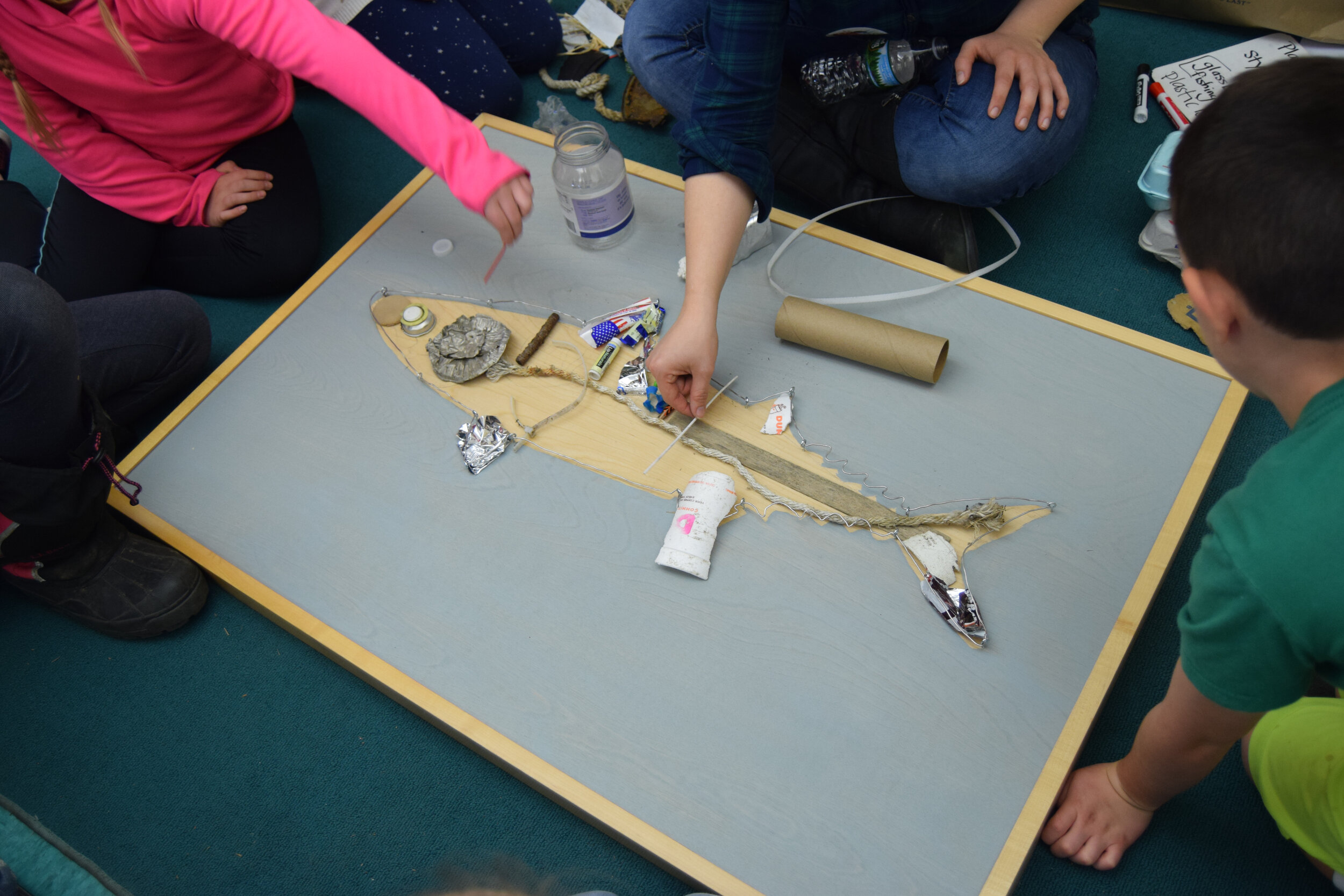
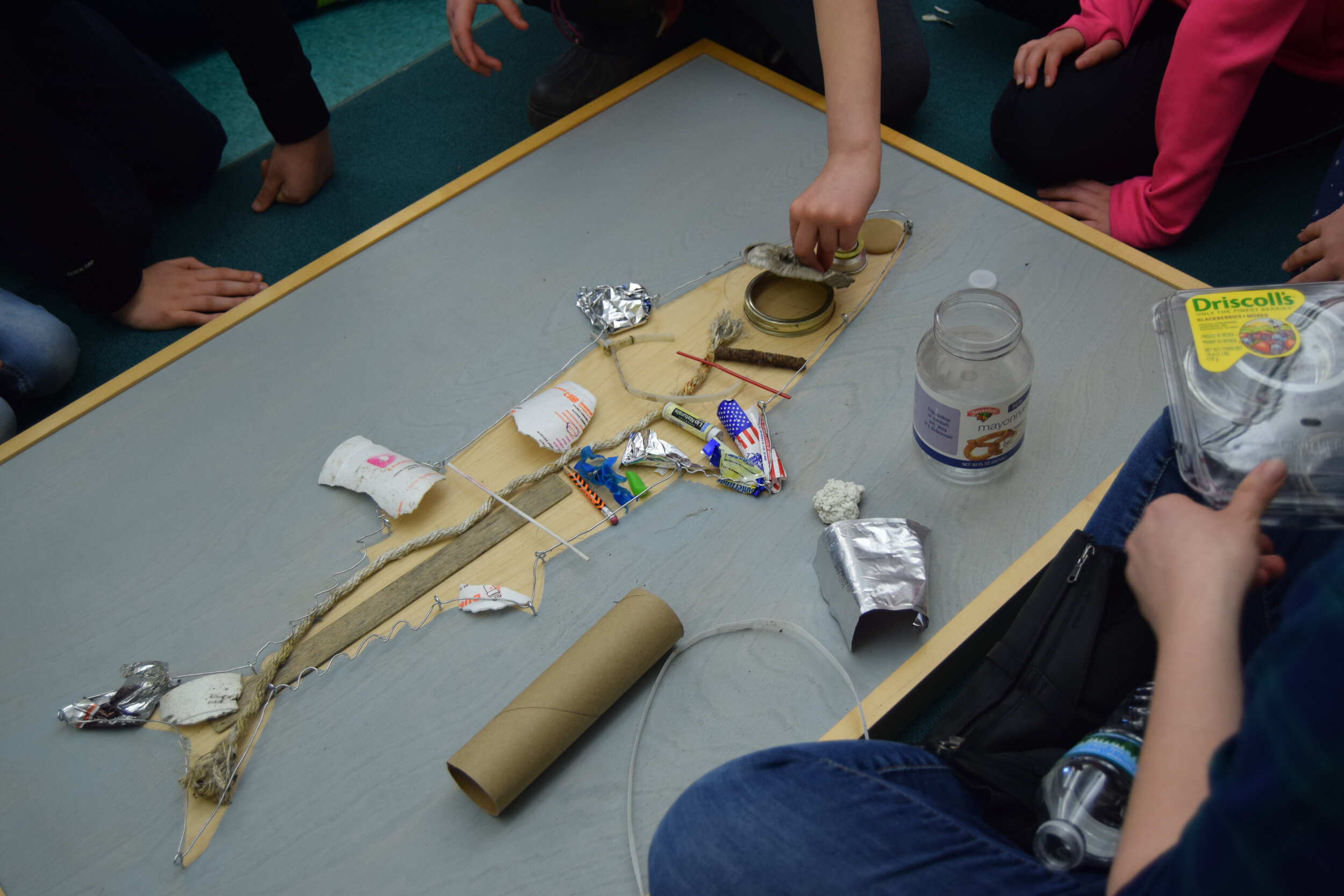






























Activity: renewable Energy
Inquiry: What energy sources are found in nature?
Expedition + Curricular Connections: Research and visit locations that use renewable energy sources like wind, water (hydro), and solar power. Stories students visited a local library powered by solar energy and learned how to use a solar-powered lawnmower! Connect with local scientists to learn more about renewable energy sources in your area.
Create + Exhibit: Create a work of art inspired by weather and renewable energy sources. Fourth grade students in the Stories program researched types of energy powered by nature. For their project, they created “sustainable” houses. The designs on the exterior are inspired by weather symbols and the colors represent different seasons. Students included informative labels and a book to educate visitors on the various energy sources they learned about. They also studied the weather and provided a solar energy output report for various works of art in the museum galleries based on “cloud cover” in the paintings.
Explore the Weather Unit for more lessons and activities about the weather!
Artist Highlight:
Stories seventh grade students examined symbiotic relationships in nature. Each disc is etched with a symbiotic relationship. The edges of the discs are painted different colors to highlight negative, positive and neutral relationships.
Explore the Symbiosis Unit for lessons and activities related to this project.
Share a photo of your art projects by emailing edassistant@farnsworthmuseum.org.
Stories of the Land and Its People
The Stories of the Land and Its People program encourages student participants to learn about people and places in their community. For more student project examples, visit our Student Exhibitions page.
Developed by:
Andrea Curtis, Museum Educator
Farnsworth Art Museum
Kim Bernard, Teaching Artist
Farnsworth Art Museum
Cheryl Berry, Classroom Educator
Farnsworth Stories Program
Kristen Andersen, Art Educator
Farnsworth Stories Program
Ferolyn Curtis, Classroom Educator
Farnsworth Stories Program
Tim Christensen, Teaching Artist
Farnsworth Art Museum
John Dietter, Classroom Educator
Farnsworth Stories Program
Karen Talbot, Teaching Artist
Farnsworth Art Museum
Sarah Michaud, Classroom Educator
Farnsworth Stories Program
Not Pictured: Wendy Jacques, Classroom Educator, Farnsworth Stories Program and Richard Wehnke, Art Teacher, Farnsworth Stories Program
Contributor(s):
Claire Horne, Education Project Assistant
Farnsworth Art Museum
Jackie Cooper, Art Educator
Farnsworth Stories Program
Not Pictured: Kelsey Gibbs, Education Project Assistant, Farnsworth Art Museum
Developed by Andrea L. Curtis, Farnsworth Art Museum, Arts in Education Program, 2021























































